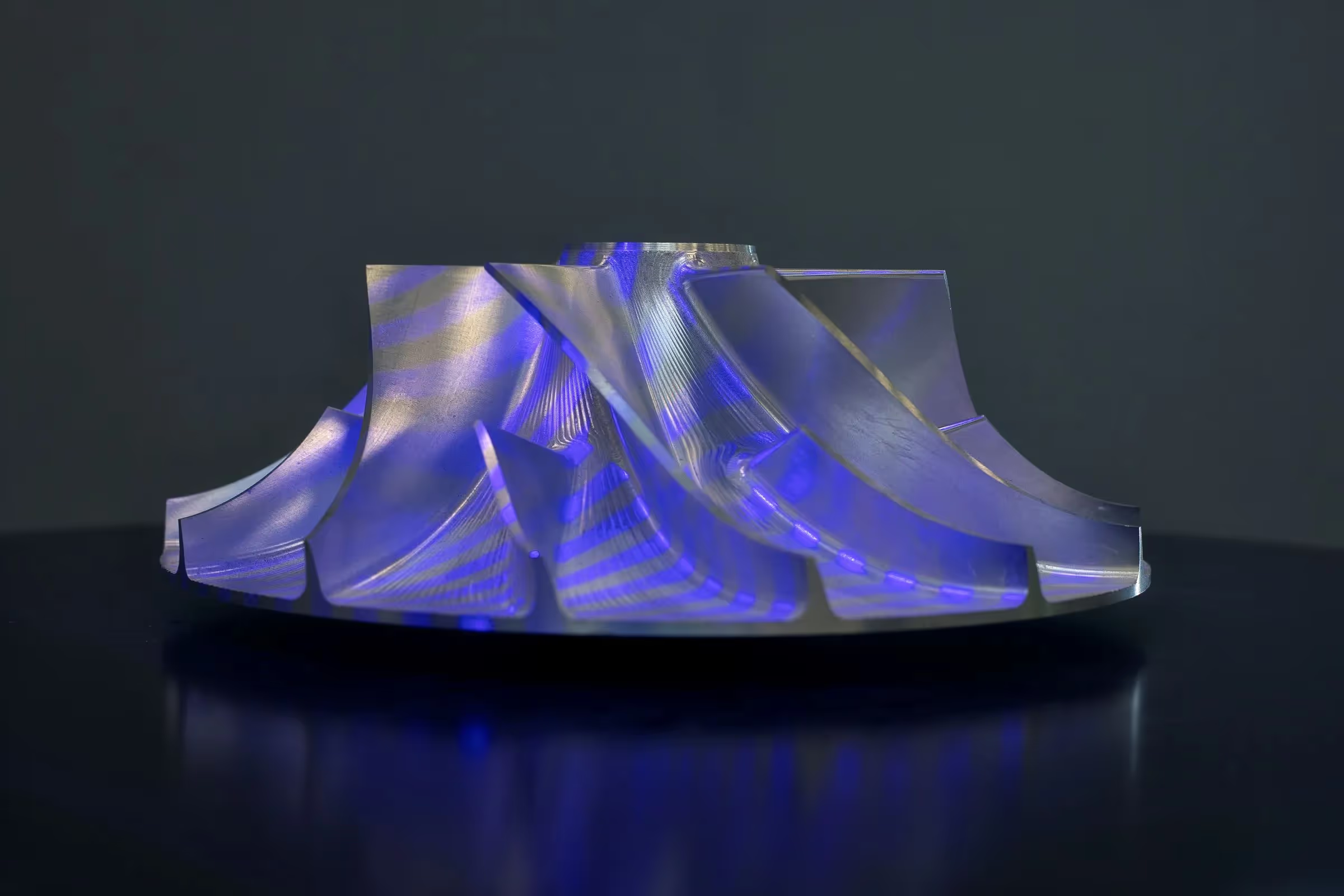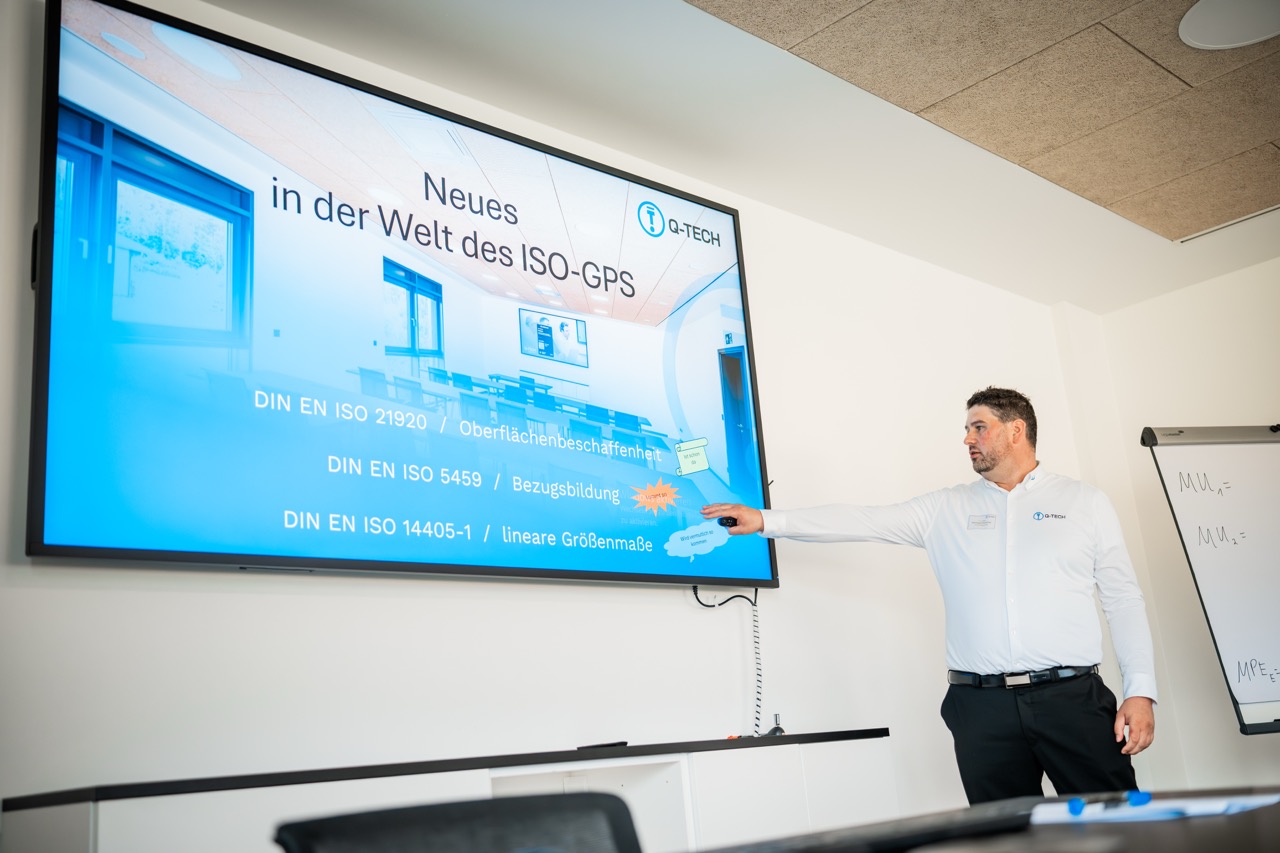Zerstörungsfreie Prüfverfahren oder auch kurz ZfP genannt, sind Methoden, die eingesetzt werden, um die Qualität von Bauteilen zu überprüfen. Die Verfahren bieten eine Reihe von Vorteilen gegenüber anderen Prüfverfahren, stellen den Prüfer aber auch vor Herausforderungen.
Was verstehen Experten unter zerstörungsfreien Prüfverfahren? ZfP sind eine Sammlung von Prüfmethoden, die dazu dienen, Werkstoffe bzw. Bauteile auf Funktionalität hin zu untersuchen, ohne diese dabei zu beschädigen. Ist das gefertigte Teil in Ordnung, kann dieses im industriellen Prozess verwendet werden und landet nicht im Ausschuss.
Wir bei Q-Tech verwenden neben optischen Methoden in erster Linie die Computertomographie. In diesem Artikel lernen Sie einige Messmethoden kennen und erfahren, welche wir nutzen.
Anwendungsgebiete
Zerstörungsfreie Prüfverfahren kommen in unterschiedlichen Bereichen zum Einsatz. Bekannte Beispiele sind die Luft-, Auto- und Raumfahrtindustrie. Hier spielen zerstörungsfreie Methoden eine wichtige Rolle, um die hohen Sicherheitsstandards zu erfüllen.
Das kann z. B. die Überprüfung von Motoren, Bremsen, Materialien und Getrieben sein. Aber auch in der Energieerzeugung bei Kernkraftwerken und Windturbinen werden ZfP verwendet.
.webp)
Welche zerstörungsfreien Verfahren gibt es?
Im Folgenden lernen Sie die einzelnen Verfahren kennen und erhalten einen Überblick, was beim jeweiligen Vorgang passiert.
Eindringprüfung
Bei dieser Methode wird eine Flüssigkeit mit niedriger Viskosität auf das zu prüfende Bauteil aufgetragen. Nach einiger Zeit läuft die Flüssigkeit in die Risse poröser Stellen. Anschließend wird ein Entwickler verwendet, der dafür sorgt, dass die Eindringflüssigkeit nach oben hin durchsickert. Daraufhin liefert dieser einen Hinweis auf die vorliegenden Fehler.
Die genutzten Flüssigkeiten lassen sich mit Wasser auswaschen oder mit entsprechenden Lösungsmitteln entfernen.
Grundsätzlich unterscheidet man zwischen der Farbeindringprüfung und der fluoreszierenden Eindringprüfung.
Mikrowellenprüfung
Diese Methode verwendet Mikrowellenfrequenzen. Hierbei sendet eine Prüfsonde die Strahlungen aus, die wiederum von einer anderen empfangen werden.
Die Sonde erkennt Poren, Risse, Lunker oder Fremdmaterialeinschlüsse und visualisiert die Ergebnisse als B- oder C-Scan.
Magnetischer Streufluss
Bei diesem Verfahren kommt ein starker Magnet zum Einsatz. Dieser erzeugt Magnetfelder, die sogar ganze Stahlstrukturen, wie Rohrleitungen und Lagertanks durchdringen können.
Ein Sensor hilft, Änderungen in der magnetischen Flussdichte zu erkennen. Diese geben Aufschluss darüber, inwiefern sich das Material durch Lochfraß, Erosion oder Korrosion verringert.
Dichtheitsprüfung
Die Dichtheitsprüfung findet mit vier unterschiedlichen Methoden statt: Blasentest, Druckabfallprüfung, Halogendiodentest oder einer Heliumdichtheitsprüfung.
Blasentest
Hier kommt ein Wasserbad zum Einsatz, das Aufschluss darüber gibt, ob an gewissen Stellen im Bauteil Luftblasen austreten.
Druckabfallprüfung
Diese Methode wird nur bei geschlossenen Systemen verwendet. Ein Druck- oder Vakuumverlust über einen bestimmten Zeitraum würde bedeuten, dass ein Leck im System vorliegt.
Halogendiodentest
Auch hier verwendet der Prüfer Druck, um mögliche Lecks zu finden. Allerdings wird hier ein Tracergas und Luftgemisch auf Halogenbasis verwendet. Im Anschluss lokalisiert eine Halogendioden-Detektoreinheit die Lecks in dem Bauteil.
Heliumdichtheitsprüfung
Das zu prüfende Bauteil, in den meisten Fällen ist das ein Behälter, wird mit Helium oder einem Helium-Luft-Gemisch befüllt. Ähnlich wie beim Halogendiodentest untersucht ein Massenspektrometer in einem umgebenden Gehäuse das Bauteil auf Veränderungen in der Gaszusammensetzung. Schlägt der Prüfmeter an, deutet das eventuell auf ein Leck hin. Alternativ kann auch Vakuum zum Einsatz kommen.
Elektromagnetische Prüfung
Die elektromagnetische Prüfung zählt zu den bekanntesten Verfahren. Sie wird unterteilt in die Wirbelstromprüfung, Wechselstromfeldmessung und Fernfeldprüfung. Bei allen Prüfungen wird ein elektrischer Strom bzw. ein Magnetfeld durch ein elektrisch-leitfähiges Teil geleitet.
Wirbelstromprüfung
Bei der Wirbelstromprüfung induziert der Prüfer ein elektromagnetisches Feld mit einer Wechselstromspule in das Prüfteil.
Wechselstromfeldmessung
Die Erzeugung des Magnetfeldes erfolgt hier mit einer Sonde. Es kommt keine Spule zum Einsatz.
Fernfeldprüfung
Diese Prüfung läuft ähnlich ab wie die Wechselstromfeldmessung. Die Fernfeldprüfung wird allerdings eher zur Prüfung von Rohren verwendet.
Akustische Emissionsprüfung
Eine ebenfalls häufig eingesetzte Methode ist die akustische Emissionsprüfung. Dieses Verfahren beruht auf der Erkennung kurzer Ultraschallimpulse. Die Ultraschallemissionen werden von Sensoren erfasst, die auf der Oberfläche der Struktur verteilt sind.
Das Verfahren findet häufig in der Nachweisprüfung von Druckbehältern Verwendung, wird aber auch zur Strukturintegritätsüberwachung eingesetzt - ein wichtiger Vorgang bei Brücken. Lecks und Korrosion lassen sich mit dieser Prüfung ebenfalls nachweisen.
Radiographie
Bei dieser optischen Messmethode kommen Röntgen- und Gammastrahlen zum Einsatz. Diese Strahlen werden durch das Prüfteil geleitet, um Fehler aufzuzeigen.
Die Stärke der Strahlung gibt dabei Aufschluss über Toleranzabweichungen im Material. Während Röntgenstrahlen hauptsächlich für dünne oder eher weniger dichte Materialien verwendet werden, sind Gammastrahlen bei dickeren oder dichteren Gegenständen die erste Wahl.
Die Messergebnisse spielen eine wichtige Rolle in der Computertomographie, Computerradiographie oder digitaler Radiographie.

Zerstörungsfreie Prüfverfahren bei Q-Tech
Wir bei Q-Tech nutzen aufgrund der technischen Möglichkeiten so gut wie immer einen Computertomographen.
Dieser bietet einen riesengroßen Vorteil, da dieses Messgerät ohne großen Aufwand im Inneren des Teils beispielsweise poröse Stellen ausfindig machen kann.
Auch bei Baugruppen funktioniert ein sogenannter CT-Scan hervorragend: Manchmal reicht eine Analyse der Einzelteile nämlich nicht aus, um die Fehlerursache zu finden.
Ein Beispiel:
Ein komplettes verschraubtes Gehäuse wird mit dem CT im Inneren untersucht. Erst durch den Zusammenbau der einzelnen Bauteile zu einem Gehäuse konnte die Fehlerursache gefunden werden. Das könnte beispielsweise eine abweichende Form- und Lagetoleranz sein, die die Funktionalität beeinträchtigt.
Bei gelösten Schrauben und einem zerlegten Gehäuse wiederum hätte der CT-Scan womöglich die Fehlerursache gar nicht identifiziert und die einzelnen Teile wären als funktionstüchtig bewertet worden, obwohl diese in dem Gesamtbild der Baugruppe deutliche Mängel aufweisen.
Advantages
Nachdem Sie nun einige zerstörungsfreie Prüfverfahren kennengelernt haben, folgen hier einmal alle Vorteile, die sich durch die Nutzung dieser Methoden ergeben.
- Werkstoffe und Bauteile werden beim Prüfen nicht beschädigt
- Kostenreduzierung
- Frühzeitiges Erkennen von Ausschussteilen
- Vermeidung von Unfällen, Umwelt- und Sachschäden
- Produktions- und Lieferzeiten können leichter eingehalten werden
- Nur mangelhafte Teile gelten als Ausschuss
-
Herausforderungen bei zerstörungsfreier Messtechnik
Trotz der genannten Vorteile gibt es bei den Verfahren auch einige Hürden. Zu den größten Herausforderungen zählt, dass ZfP meist von speziell geschultem Personal durchgeführt werden müssen, weil die Tätigkeiten ein hohes Maß an Fachwissen und Erfahrung erfordern.
Bei Q-Tech haben wir diese Tatsache erkannt und legen daher großen Wert auf eine qualifizierte und hochwertige Schulung unserer Mitarbeiter, damit sie ohne Probleme in der Lage sind, die Prüfverfahren akkurat durchzuführen.
Als Experten auf dem Gebiet der Messtechnik und optischen Prüfverfahren haben wir bei Q-Tech über die Jahre ein umfassendes Leistungsportfolio angelegt, das auf die spezifischen Bedürfnisse unserer Kunden zugeschnitten ist.
Unsere Facharbeiter setzen die modernste Technologie ein, um sicherzustellen, dass die höchsten Standards erfüllt und die besten Ergebnisse erzielt werden.
So können unsere Kunden absolut sicher sein, dass die angewendeten Messverfahren qualitativ auf höchstem Niveau ablaufen.
Bedenken Sie, dass zerstörungsfreie Verfahren nicht immer alle Arten von Schäden in den Bauteilen erkennen können. Vor- und Nachteile gibt es bei jeder einzelnen Methode. Daher lohnt es sich bei Unklarheiten manchmal mehrere Verfahren miteinander zu kombinieren, um eine aussagekräftige Bewertung über den Qualitätszustand des Bauteils abzugeben.
Conclusion
Zerstörungsfreie Prüfverfahren bieten unter anderem den großen Vorteil, dass geprüfte Bauteile beim Prüfen nicht beschädigt werden.
Aufgrund der hohen technischen Anforderungen ist Erfahrung, Fachwissen und Qualifikation entscheidend. Q-Tech ist dabei ihr persönlicher, zuverlässiger und erfahrener Partner. Wir bieten Ihnen optische Messverfahren, die problemlos Ihren Anforderungen gerecht werden.





.svg)



.avif)
.svg)

%20(1).webp)
.svg)
.svg)
%20(1).webp)

.svg)
.svg)
.svg)
.svg)


.svg)
.svg)
